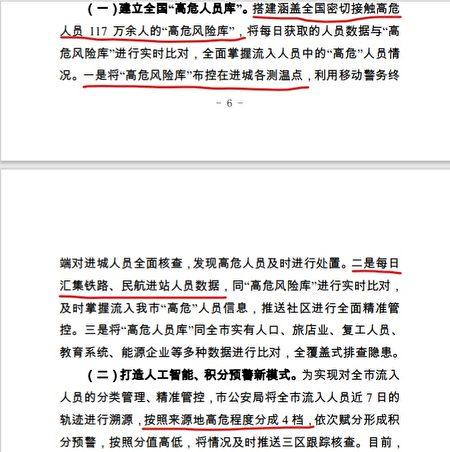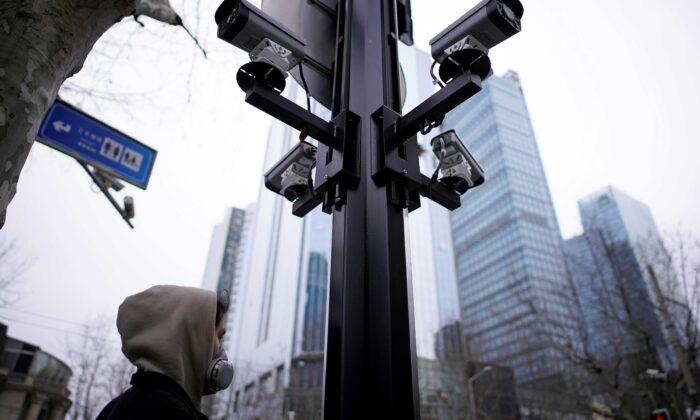The public security (police) bureau of Wuhai city, Inner Mongolia, issued a notice about “fully advancing the construction of police big data apps,” which highlighted that the Chinese regime maintained a national COVID-19 database for “high-risk populations.”
The notice, issued in May, stated that there were more than 1,170,000 people in the database. It would be updated daily with information, such as the body temperatures of people entering the city, who are screened at the city’s checkpoints; and the number of passengers entering local railway stations and airports. They would be rated into four categories, based on the severity of the outbreak in their place of residence.

In addition, data would be collected on people’s whereabouts: where they’ve eaten, stayed at, traveled around, went shopping, or entertained themselves, according to the notice.
The police bureau said they would collaborate with internet companies, tech firms, and three telecommunications giants—China Mobile, China Unicom, and China Telecom—to maximize their surveillance.
The document did not mention how many citizens total have been monitored under the database since the pandemic broke out.
State media recently reported that Guizhou Province has become a super “big data hub,” with police utilizing technology for “prevention and control” purposes.
In another case, a person wrote on social media that a disease control official, through surveillance cameras, located the rider sitting next to him while he was on a bus to alert him about a missed phone call from the official. The two had no prior contact before the bus trip.
In February, deputy director of the command center of Nanjing’s police bureau Dai Xiulin said in an interview with state-run Nanjing Daily that the bureau has created files for each “key COVID-19 target.” According to Dai, with big data comparative analysis, police could detail the whereabouts of key targets and send orders to police stations for “accurate home visits.”






Friends Read Free